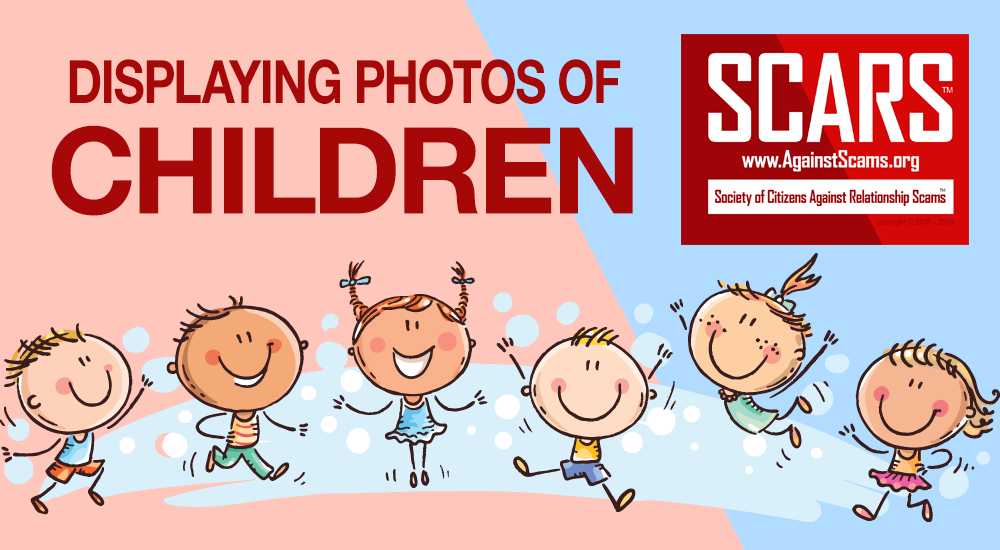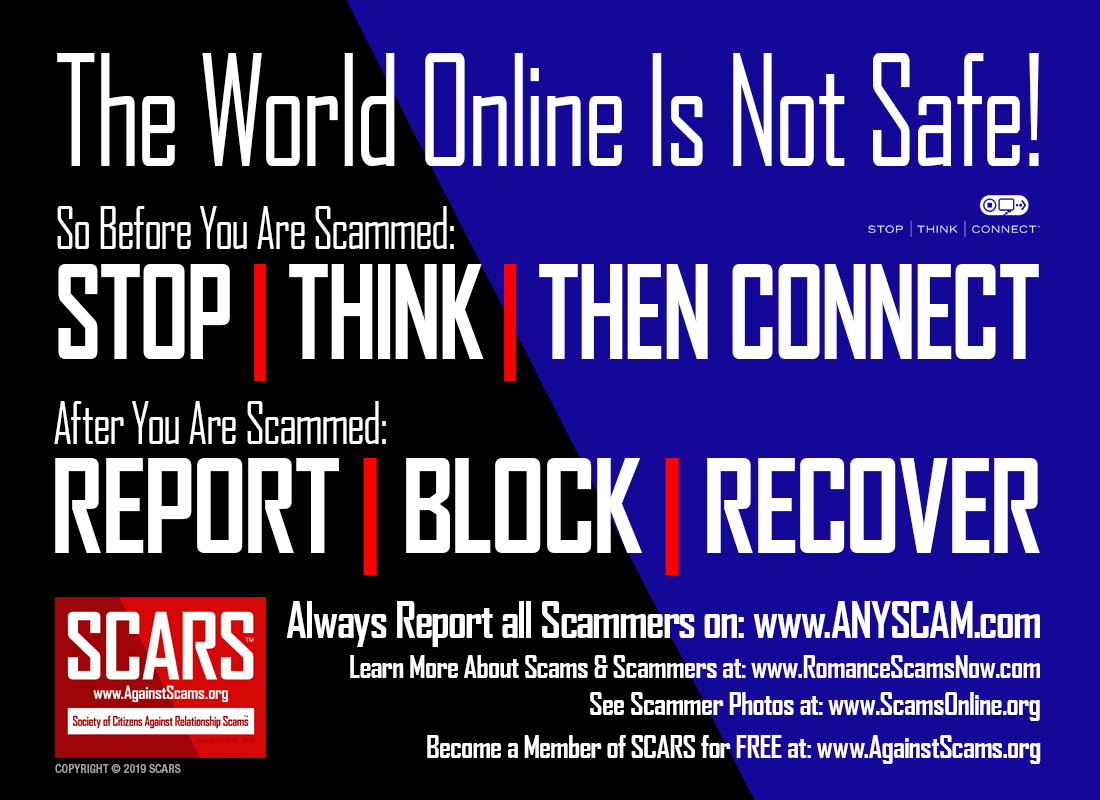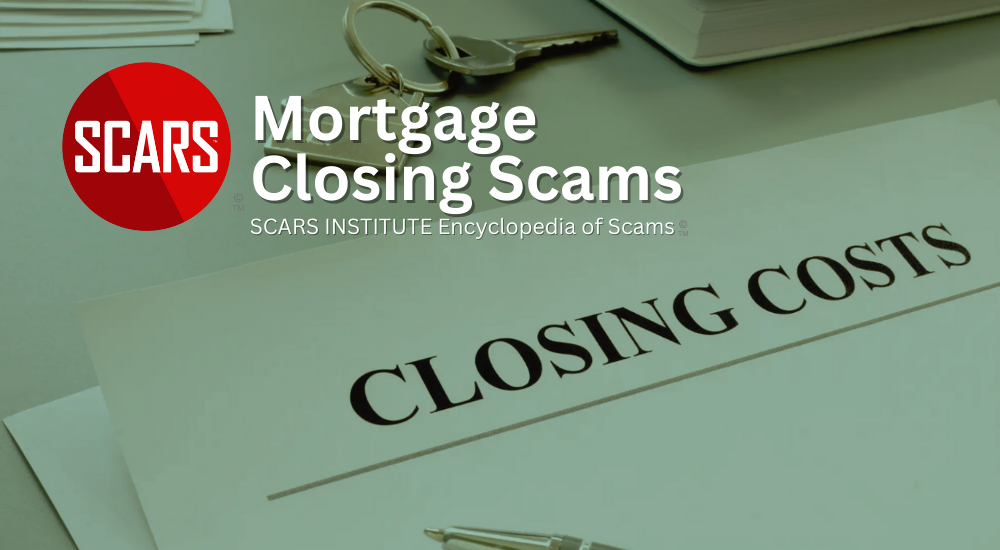SCARS™ Insight: Displaying Stolen Photos Of Children
Scammers Constantly Use Stolen Photos Of Adults To Scam People, But They Also Use The Children Of The People In The Stolen Photos.
IS IT ILLEGAL? YES, IT IS.
However, there are different elements to this discussion, including if it is ethical for anti-scam groups to post those photos!
Consider if you are the parent of one of these children? How would you feel about your child being used by scammers to defraud people?
Now how would you feel about some vengeful scam hater that spreads those photos everywhere across the internet?
What do you think those parents feel about seeing their child’s photos wantonly displayed without any regard for the pain the parents feel or for the bullying that can occur against the child when those photos are found by school mates?
Most of the time, the amateur anti-scam hate groups don’t even indicate that the photos were stolen and are not a real criminal!
Child Photography In The United States
According to Lawyers.com:
Basically, with a few exceptions, it is actually perfectly legal for strangers to photograph or videotape your child, and they are free to post or publish the images as well.
Contrary to what many parents believe, they do not need to give their consent or sign a release. However, some states have passed more restrictive legislation to change this permissiveness, and school districts do take steps to protect their children.
The idea that a complete stranger can photograph your child without the parent’s consent and publish that image seems sketchy, at best. But the Legal Principle that allows publishing and circulation of photographs and video images of children is based in the U.S. First Amendment to the United States Constitution. The First Amendment protects both the freedom of expression and freedom of the press and prevents the federal government from passing sweeping laws that restrict these freedoms.
So, as long as a photographer uses the images for editorial purposes, and IF HE OR SHE TOOK THEM while your child was in a public setting, the photographs are generally within the law even if you do not give your consent. An example would be a newspaper article about the condition of playgrounds in public parks; a journalist could publish a photo that includes your child playing in the public park without your consent.
Of course, there are certain exceptions. For example, if the photo or video is used for sexual or predatory purposes, this could violate child pornography laws.
State laws on this issue are shifting with the rise of social media. At least two states have considered legislation to make it illegal to photograph children without parental permission. Georgia passed a bill in 2010 that makes it illegal for anyone but a parent to photograph or videotape a child, but the law may be revised to specifically address registered sex offenders. New Jersey began working on a similar law in 2011, but the efforts seem to have stalled. State laws, though, must yield to the First Amendment; in other words, they are limited in the extent to which they can limit people from free expression, and they must be narrowly tailored.
Child Photography Law In The United Kingdom
In a familiar scenario to all parents, you are at your child’s Saturday morning soccer game when you see the other team’s parents taking photos of your children and filming. You haven’t given permission for them to take photos or film your children, can they do this without your permission?
Yes – It Is Perfectly Legal!
It is not illegal for people to take photos of your children in public places without your permission in the United Kingdom (and this is similar in most countries.)
There is no right to privacy that forbids people from taking a person’s photograph whilst on public property. In fact, you can take photos of someone in their house or backyard, so long as you do not trespass onto their private property. If someone on the street is taking a photograph, as long as they are not physically trespassing, there is no law that prevents that.
Similarly, if you are on private property it is illegal to take pictures or film without permission. On private property owners have the right to impose restrictions on any photography. Taking photos or filming on private property without permission is illegal. Many sporting venues are private property, even if they are owned by the local council or other government organizations. These places can make rules that ban people from photographing or recording any part of the space or the people within it. Purchased tickets sometimes have special waivers as a condition of entry.
Whilst there are some laws contained in the Criminal Code governing the photography of children, these laws are aimed at protecting children from the production and distribution of indecent or obscene material.
But what if the material isn’t obscene?
There limited protection from people photographing others in public, however, the conduct of the photograph must be “offensive” or “threatening” and be likely to interfere with the enjoyment of a public place. This may have some application to someone openly photograph children in a public place, it may not apply where the filming was concealed. You should discuss this with a licensed attorney.
Now Let’s Consider Stolen Photos Used By Scammers
These are NOT photos TAKEN BY the scammer. They are stolen and that means that their use violates the legal rights of the original photographer. In other words, they violate copyright
Scammers are NOT allowed to steal photos under copyright “fair use” provisions. Additionally, most anti-scam groups are not able to use them either without very clear and distinct notices and advisories.
Legal Fair Use Under Copyright Law
Fair use is a legal doctrine that promotes freedom of expression by permitting the unlicensed use of copyright-protected works in certain circumstances. Section 107 of the United States Copyright Act provides the statutory framework for determining whether something is “fair use” and identifies certain types of uses—such as criticism, comment, news reporting, teaching, scholarship, and research—as examples of activities that may qualify as fair use. Section 107 calls for consideration of the following four factors in evaluating a question of fair use:
- Purpose and character of the use, including whether the use is of a commercial nature or is for nonprofit educational purposes:
Courts look at how the party claiming fair use is using the copyrighted work, and are more likely to find that nonprofit educational and noncommercial uses are fair. This does not mean, however, that all nonprofit education and noncommercial uses are fair and all commercial uses are not fair; instead, courts will balance the purpose and character of the use against the other factors below. Additionally, “transformative” uses are more likely to be considered fair. Transformative uses are those that add something new, with a further purpose or different character, and do not substitute for the original use of the work. [More on this below] - Nature of the copyrighted work:
This factor analyzes the degree to which the work that was used relates to copyright’s purpose of encouraging creative expression. Thus, using a more creative or imaginative work (such as a novel, movie, or song) is less likely to support a claim of a fair use than using a factual work (such as a technical article or news item). In addition, use of an unpublished work is less likely to be considered fair. - Amount and substantiality of the portion used in relation to the copyrighted work as a whole:
Under this factor, courts look at both the quantity and quality of the copyrighted material that was used. If the use includes a large portion of the copyrighted work, fair use is less likely to be found; if the use employs only a small amount of copyrighted material, fair use is more likely. That said, some courts have found use of an entire work to be fair under certain circumstances. And in other contexts, using even a small amount of a copyrighted work was determined not to be fair because the selection was an important part—or the “heart”—of the work. - Effect of the use upon the potential market for or value of the copyrighted work:
Here, courts review whether, and to what extent, the unlicensed use harms the existing or future market for the copyright owner’s original work. In assessing this factor, courts consider whether the use is hurting the current market for the original work (for example, by displacing sales of the original) and/or whether the use could cause substantial harm if it were to become widespread.
In addition to the above, other factors may also be considered by a court in weighing a fair use question, depending upon the circumstances. Courts evaluate fair use claims on a case-by-case basis, and the outcome of any given case depends on a fact-specific inquiry. This means that there is no formula to ensure that a predetermined percentage or amount of a work—or specific number of words, lines, pages, copies—may be used without permission.
Defamatory Use
According to the Electronic Freedom Foundation:
What Is Defamation?
Generally, defamation is a false and unprivileged statement of fact that is harmful to someone’s reputation, and published “with fault,” meaning as a result of negligence or malice. State laws often define defamation in specific ways. Libel is a written defamation; slander is a spoken defamation.
What Are The Elements Of A Defamation Claim?
The elements that must be proved to establish defamation are:
- a publication to one other than the person defamed (in other words to someone other than the person depicted in a public or private context);
- a false statement of fact (but can be an implied statement);
- that is understood as
- being of and concerning the plaintiff (the person depicted); and
- tending to harm the reputation of the plaintiff.
Is truth a defense to defamation claims?
Yes. Truth is an absolute defense to a defamation claim. But keep in mind that the truth may be difficult and expensive to prove.
Can my opinion be defamatory?
No—but merely labeling a statement as your “opinion” does not make it so. Courts look at whether a reasonable reader or listener could understand the statement as asserting a statement of verifiable fact. (A verifiable fact is one capable of being proven true or false.) This is determined in light of the context of the statement. A few courts have said that statements made in the context of an Internet bulletin board or chat room are highly likely to be opinions or hyperbole, but they do look at the remark in context to see if it’s likely to be seen as a true, even if controversial, opinion (“I really hate George Lucas’ new movie”) rather than an assertion of fact dressed up as an opinion (“It’s my opinion that Trinity is the hacker who broke into the IRS database”).
Use Of Stolen Photos And Defamation
The vast majority of photos that are purported to be “stolen” and “used by scammers” appears with no proper disclaimers or qualifying statements.
If an anti-scam group displays a photo that they “took” from someone’s online profile claiming the person’s profile was false or was a scammer, is in itself potentially defamatory. However, we do not think there is much risk from scammers defending their reputations in court.
However, What About The REAL Person(S) In The Photos?
This presents a completely different situation, for the following reasons:
- The photos themselves are stolen and infringe on the original copyright holder’s rights. The Communications Decency Act does not provide unlimited immunity from copyright theft.
- Display of the photos without clearly visible disclaiming explanations can be defamatory since many people will “assume” the person pictured is a scammer. Unfortunately, far to many victims do not understand the distinction with stolen photos – that the person pictured is a victim as well.
- Text disclaimers must always be visible whenever the photo is displayed. In the case of social media, this is not always the case. Photos can be shared into new contexts and written information can be left behind in the original posting.
- Many (most?) stolen photos are of private people as opposed to public people, and this brings with it special considerations and differences in their right of privacy and the potential harm done by the use of the stolen photos.
- Almost all anti-scam groups have no clearly defined policies or best-practices that provide for reinforcement of their use. This includes deliberate attempts to hide their identities which can void free-speech and fair use since it is obvious that the publish fears the consequences of their actions.
The result is that sloppy use and display of stolen photos “used by scammers” opens many doors to liability for the publisher if all factors are not carefully considered.
What About Ethics?
The Society of Citizens Against Relationship Scams has long held that ethical standards are vital in the work of education scam victims and potential scam victims. For that reason, SCARS developed its Code of Conduct and other standards.
SCARS Standards Require Certain Actions When Publishing Photos Of Real People That Were Stolen And Used By Internet Fraudsters:
- The application of ethical standards that are clearly published and referenced for public visibility.
- A clear disclaimer on every photo believed to have been stolen from an impersonation victim making it clear that it was stolen by scammers and that the person pictured is NOT a criminal. This does not depend on anything but the display fo the photo itself and will appear even in search results online.
- A complete prohibition of the display of children in the stolen photos – not simply blanked out, but prohibiting the display of any part of the child which can be traumatic to a parent.
- We not only disclaim that the photo was stolen and used by a criminal but do so in a way that can benefit the impersonation victim to make their case (if needed) that they are a victim too.
Careless Display
Negligent and careless display of these stolen photos causes hard to the impersonation victim and can reinforce the mistaken notion in some victims that the person pictured is a criminal. Scam victims that were defrauded using the face of the impersonation victim have “hunted” them down (cyberstalked) and disrupted their lives and cause great emotional harm. Such negligence could be actionable and defamatory towards the impersonation victim.
However, the constant display of children in these photos is unconscionable and completely unacceptable. While there might be oversights, the frequent display of such photos is very concerning.
SCARS believes that all persons attempting to help educate the public about scammers and the practice of using stolen photos and impersonating real people should follow the SCARS Code of Conduct and Reporting Standard since these represent the “Best Practices” and the standard of care required. However, in all cases, there is no excuse for displaying photos with children, period.
Proper Disclaimed Display
NOTE the following are copyright © 2010-2020 SCARS and may not be used without the explicit written permission of SCAES.
We expect all SCARS Members to properly disclaim stolen photos they display with one fo the following:
The above are examples of SCARS’ disclaimers appearing in the photos so that they are clear regardless of where the photo is displayed.
We do this so that we make it clear that the person in the photo is NOT a criminal and is a victim. In additional we frequently display campaign signage to further reinforce these messages:
Considerations – Things You Should Do
When posting photos of your child or other children on social media ask yourself – How am I making this photo identifiable? How am I limiting who can see it, share it, copy or save it?
By the additions of these disclaimers, we are doing our best to clarify and protect the reputations of the impersonation victims. But we are one of the very few that do and care about this.
Think about:
- Who might be able to see these photos?
- Is there anyone else in this photo? Some people may not want their images to be published.
- Are there any identifying details in the photo? Including personal information such as your child’s name, school, location, etc.
- When uploading photos and videos check your privacy settings on social media. You may want to put privacy settings on any social media platform to restrict access to photographs and information about any child to family and close friends.
You have to be the first line of defense for yourself and your family’s photos. If you do not do it no one else will! And never Trust Facebook or any other platform to do it for you. To them, you are just $$ Dollar Signs!
If you see your child’s photos being displayed take action. Contact Facebook and report copyright infringement, it only takes a few minutes and if properly done can get you the results you want.
Remember:
Facebook or Twitter are not responsible for the careless display of stolen photos, that responsibility rests with the person that posted them.
By The Way
When we display photos of children, they are stock photography and we have a legal license do use them!
TAGS: SCARS, Stolen Photos, Used By Scammers, Children’s Photos, Copyright Infringement, Defamation Against Victims, Amateur Anti-Scam Groups, Anti-Scam, Scams, Scammers, Fraudsters, Cybercrime, Crybercriminals, Romance Scams, Scam Victims,
SCARS™ Team
Society of Citizens Against Relationship Scams Inc.
A Worldwide Crime Victims Assistance Nonprofit Organization
Visit: www.AgainstScams.org
Contact Us: Contact@AgainstScams.org
PLEASE SHARE OUR ARTICLES WITH YOUR FRIENDS & FAMILY
HELP OTHERS STAY SAFE ONLINE – YOUR KNOWLEDGE CAN MAKE THE DIFFERENCE!
The Latest SCARS Posts:
FIND MORE SCAM NEWS
«SCAMCRIME.COM»
JOIN US ON FACEBOOK
«CLICK HERE»
END
MORE INFORMATION
– – –
Tell us about your experiences with Romance Scammers in our
« Scams Discussion Forum on Facebook »
– – –
FAQ: How Do You Properly Report Scammers?
It is essential that law enforcement knows about scams & scammers, even though there is nothing (in most cases) that they can do.
Always report scams involving money lost or where you received money to:
- Local Police – ask them to take an “informational” police report – say you need it for your insurance
- U.S. State Police (if you live in the U.S.) – they will take the matter more seriously and provide you with more help than local police
- Your National Police or FBI « www.IC3.gov »
- The SCARS|CDN™ Cybercriminal Data Network – Worldwide Reporting Network on « www.Anyscam.com »
This helps your government understand the problem, and allows law enforcement to add scammers on watch lists worldwide.
– – –
To learn more about SCARS visit « www.AgainstScams.org »
Please be sure to report all scammers
on « www.Anyscam.com »
Disclaimer:
SCARS IS A DIGITAL PUBLISHER AND DOES NOT OFFER HEALTH OR MEDICAL ADVICE, LEGAL ADVICE, FINANCIAL ADVICE, OR SERVICES THAT SCARS IS NOT LICENSED OR REGISTERED TO PERFORM.
IF YOU’RE FACING A MEDICAL EMERGENCY, CALL YOUR LOCAL EMERGENCY SERVICES IMMEDIATELY, OR VISIT THE NEAREST EMERGENCY ROOM OR URGENT CARE CENTER. YOU SHOULD CONSULT YOUR HEALTHCARE PROVIDER BEFORE FOLLOWING ANY MEDICALLY RELATED INFORMATION PRESENTED ON OUR PAGES.
ALWAYS CONSULT A LICENSED ATTORNEY FOR ANY ADVICE REGARDING LEGAL MATTERS.
A LICENSED FINANCIAL OR TAX PROFESSIONAL SHOULD BE CONSULTED BEFORE ACTING ON ANY INFORMATION RELATING TO YOUR PERSONAL FINANCES OR TAX RELATED ISSUES AND INFORMATION.
This content and other material contained on the website, apps, newsletter, and products (“Content”), is general in nature and for informational purposes only and does not constitute medical, legal, or financial advice; the Content is not intended to be a substitute for licensed or regulated professional advice. Always consult your doctor or other qualified healthcare provider, lawyer, financial, or tax professional with any questions you may have regarding the educational information contained herein. SCARS makes no guarantees about the efficacy of information described on or in SCARS’ Content. The information contained is subject to change and is not intended to cover all possible situations or effects. SCARS does not recommend or endorse any specific professional or care provider, product, service, or other information that may be mentioned in SCARS’ websites, apps, and Content unless explicitly identified as such.
The disclaimers herein are provided on this page for ease of reference. These disclaimers supplement and are a part of SCARS’ website’s Terms of Use.
Legal Notices:
All original content is Copyright © 1991 – 2020 Society of Citizens Against Relationship Scams Inc. (D.B.A SCARS) All Rights Reserved Worldwide & Webwide. Third-party copyrights acknowledge.
SCARS, SCARS|INTERNATIONAL, SCARS, SCARS|SUPPORT, SCARS, RSN, Romance Scams Now, SCARS|INTERNATION, SCARS|WORLDWIDE, SCARS|GLOBAL, SCARS, Society of Citizens Against Relationship Scams, Society of Citizens Against Romance Scams, SCARS|ANYSCAM, Project Anyscam, Anyscam, SCARS|GOFCH, GOFCH, SCARS|CHINA, SCARS|CDN, SCARS|UK, SCARS|LATINOAMERICA, SCARS|MEMBER, SCARS|VOLUNTEER, SCARS Cybercriminal Data Network, Cobalt Alert, Scam Victims Support Group, are all trademarks of Society of Citizens Against Relationship Scams Inc., All Rights Reserved Worldwide
Contact the law firm for the Society of Citizens Against Relationship Scams Incorporated by email at legal@AgainstScams.org













Leave A Comment